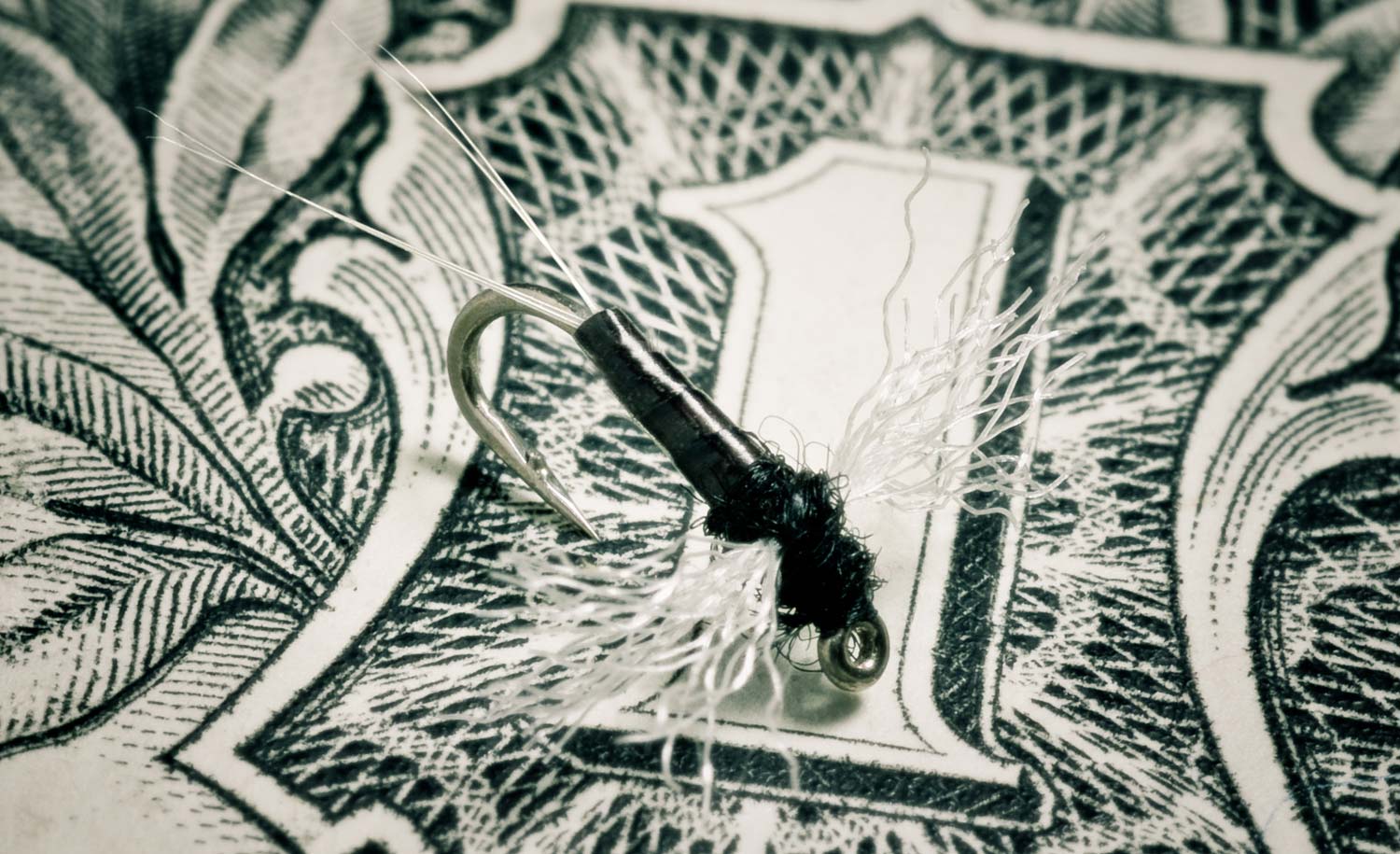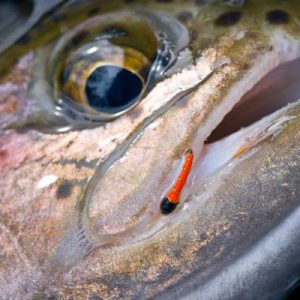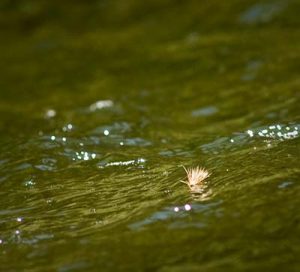
Photo by Louis Cahill
By Brian Kozminski
—SlluurpAH– “Set the Hook!“-exerts the guide.
“Ewp~ #$^@%!! Damn, I missed again!” casually disclaimers client.
“That’s the third trout you’ve missed today.” arm chair QB fishing buddy retorts from stern of the drift boat.
“Lemme check that fly, I know it’s your favorite ‘Lucky’ Adams, –BUT it is missing a hook.“
Never happened to you? Kudos, keep up the great work and spread your practices to all those who you may come in contact with. We need more vigilance like yours. Anglers who routinely check their fly and keep the hook sharp are a dying breed. Seems there is a trend in the fly market to buy volume ‘less expensive flys” from not so reputable sources. These days, I find it very hard to believe one would allow themselves to purchase a $600 reel, pair it with $800 rod and then continue to outfit and accessorize themselves in outrageous Monkey Logo’d shirts and fancy rubber pants, only to skimp on the single & most important part of the equation that actually connects them to the fish-> The FLY.
This passed summer, while waiting for clients, eating a delectable reuben sandwich, counting the number of Pine Grosbeaks, Siskins, and Purple Finches along side one of our more famous waterways, I overheard guys at a table next to me complaining about the price of flies. It was not the haughty Cherry Run Orvis store, but it was the height of big bug season, drakes were predicted tonight certainly on the North branch, possibly sections of the South, and inter-mitten log jams in between.
“$30 bucks a dozen! Thats a damn outrage!!” befuddled one guest.
 Rightfully so, but when you hook a monster brown tonight, you must know a few facts about what goes into your $30/dozen flies versus the .80 per fly from Discount Fly Guy. The fly shop has a reputation to uphold, and it cannot be cut short at the terminal end of your line. The shop guys who tie flies all winter to pay the bills when rooms are not rented and few anglers make their way north for respite, only use quality hooks and materials provided by the shop owner. They in turn are paid on piece orders and quickly learn to tie a well proportioned Borchers Drake while not wasting materials nor thread wraps. I would bet my time on the water is going to be better spent using that fly versus a fifty cent knock of from Sri Lanka.
Rightfully so, but when you hook a monster brown tonight, you must know a few facts about what goes into your $30/dozen flies versus the .80 per fly from Discount Fly Guy. The fly shop has a reputation to uphold, and it cannot be cut short at the terminal end of your line. The shop guys who tie flies all winter to pay the bills when rooms are not rented and few anglers make their way north for respite, only use quality hooks and materials provided by the shop owner. They in turn are paid on piece orders and quickly learn to tie a well proportioned Borchers Drake while not wasting materials nor thread wraps. I would bet my time on the water is going to be better spent using that fly versus a fifty cent knock of from Sri Lanka.
There was a guide, probably long gone now or working in Alaska, but he kept two distinct fly boxes in his boat. One box was for beginner clients and the other was for personal use or when he had regulars on the boat. I get the theory, a .40 fly catches trees and logs as well as a $2 fly, but if a decent fish goes after your first time client fly and it breaks- you have your reputation on the line. The cheaper fly will unravel and generally doesn’t float properly nor as long as a well tied fly will, so how do you even propose the first time client has a decent chance at actually presenting and catching a fish to make it a memorable time so that they do in fact become a regular client?
The majority of Fly Shops source a good proportion of the fly bins from more than one respectable Fly Manufacturer.
They should anyway, in case a production facility were hit with a monsoon or natural disaster- as was the case a few years ago when the Philippines took a hard storm. Often, heavy orders on a particular pattern can run inventory short in the height of season or if a few magazine articles suddenly make a new pattern more popular than previously forecasted.
Consider a fly manufacturer that has been doing this since 1982, they have seen trends and have the single largest on hand inventory of flies in the US- UMPQUA FEATHER MERCHANTS. I have seen the rows from floor to ceiling- a HUGE warehouse of intricate aisles and a system for the crew who assemble each order. The amount of detail that goes into each fly Umpqua sells is beyond comparison. First, all the materials used for their production is sorted and hand selected before shipping to tying facility. Second, they only use the highest grade hooks, tied according to Signature Tyer pattern specifications or on TMC equivalent hooks. Many companies take the cheap way out with a lesser quality hook. This is where your non-forged Japanese steel fly broke off four logs ago and you consequently missed the last two (or three) fish.
The Devil is in the Details- and its all in the details…
 Highest quality standards on each fly, whether it is a simple Amy’s Ant or Parachute Purple Adams to the venerable Copper John, no corners can be cut. Lead wraps on nymphs are exact, bead sizing and weight are never compromised. Counter ribbing on palmered hackle is often skipped by other companies- all Umpqua flies have counter ribbing. The hackle on your Stimulator or PMX is never sloppy, or a few wraps less/more, the first fly looks exactly like the 1K fly.
Highest quality standards on each fly, whether it is a simple Amy’s Ant or Parachute Purple Adams to the venerable Copper John, no corners can be cut. Lead wraps on nymphs are exact, bead sizing and weight are never compromised. Counter ribbing on palmered hackle is often skipped by other companies- all Umpqua flies have counter ribbing. The hackle on your Stimulator or PMX is never sloppy, or a few wraps less/more, the first fly looks exactly like the 1K fly.
Fly Heads are all whip-finished and glued, you won’t find that with other flies. This is never compromised. Do yourself a test. Seriously. Order a dozen familiar basic flies from ‘Discount Fly Co. A’ or ‘B’ and order the same from Umpqua, you will quickly understand the consistency. Umpqua has over 180 Signature Fly tyers with a vast knowledge and depth of experience that only keeps growing. Yes, other companies have a growing number of ‘Tyers’ but it seems that very few have the History and balance of new and experience like Umpqua has. Ask your local fly shop what flies they carry- you are the customer and have every right to know what you are tying on the end of your line. Besides, when you do land that trout you have been chasing for the past few years, you might want to know who deserves the credit.
Tight Lines!
Brian Kozminski Gink & Gasoline www.ginkandgasoline.com hookups@ginkandgasoline.com Sign Up For Our Weekly Newsletter!

Pingback: Quality Flies | Fishing Window - Latest Fishing Blogs Posts
Well said sir. I could not agree more!
Pingback: Quality Flies -
Funny, a friend came to visit me in Hawaii a couple years back and brought me a selection of saltwater flies from Umpqua. Every one I used broke off at the shank or quickly fell apart. Junk hooks, thats one reason among many why I tie my own.
I almost never comment because on articles such as this. I don’t get to fish like many other people and I certainly am not blessed with the ability to have an expensive reel and rod and waders. But, I do tie many of my own flies. Not to anybodies specifications but to what I have or can afford to get. I don’t always get a trout to the net but I don’t remember one because of a previously broken hook on a snag. I always fish barbless and often hope the fish does self-release. However, I do enjoy the real business of fly fishing which is being on the water, getting a fish to notice and attempt to eat my offering and ensuring that all of my fish are returned in good health and available for other people. I never fish more than one time with an aggressive guide who keeps score out loud and rides me for not landing a trout or two. I am sure they also miss landing a trout now and then. Especially a really nice one like a steelhead. I absolutely do want to see the Umpqua’s of the sport stay in business and when I go to a special placeto fish like the Missouri Riveror the Big Horn I buy flies that are recommended as being essential. But, It is from a local shop and I don’t have time to be sure they are of the quality that you are describing. But they will likely cost the same amount. You have described an interesting dilemma.
That’s all great in theory. I’ve had good luck with cheap flies and lousy luck with trout flies bought from the bin at $2-3 per each. I’m curious how many premium shops stick those cheapies into their bins? Unless you know the shop well it’s hard to know what you’re getting. This is why I NEVER buy flies for steelhead, NE salt water, or Caribbean fishing. Those I tie myself or get from friends on known hooks.